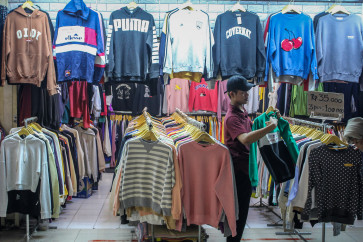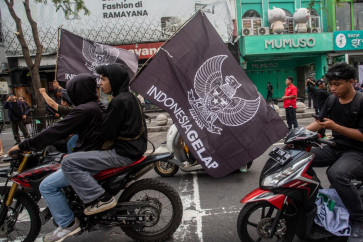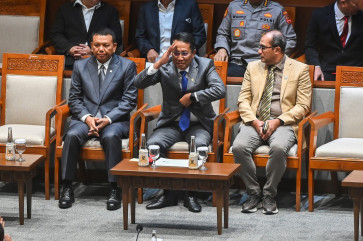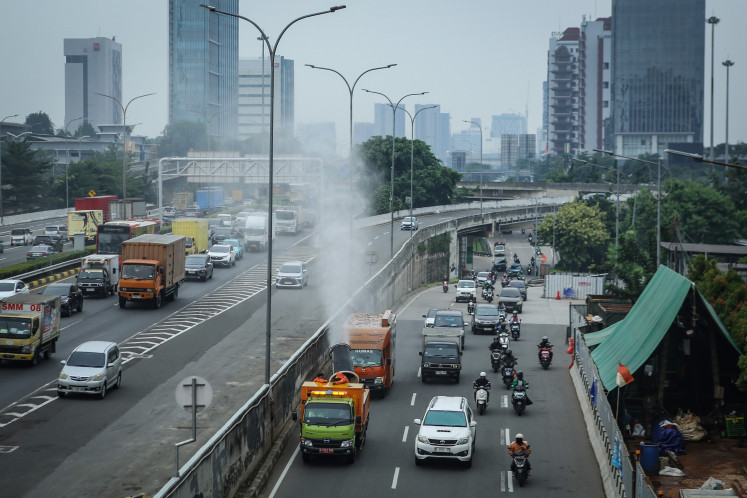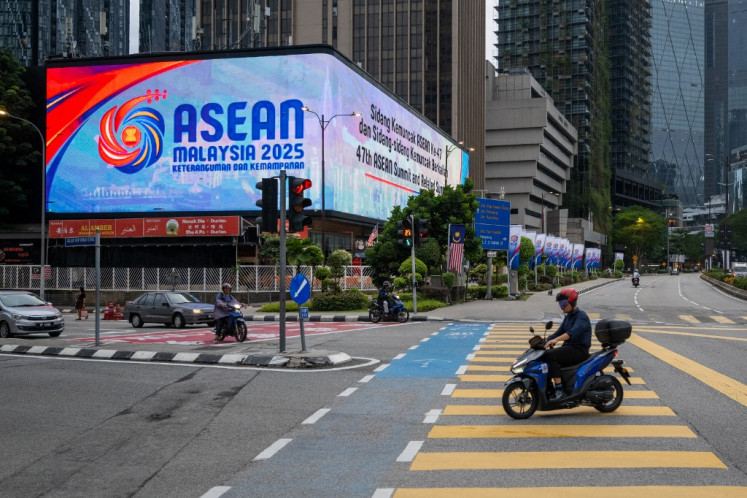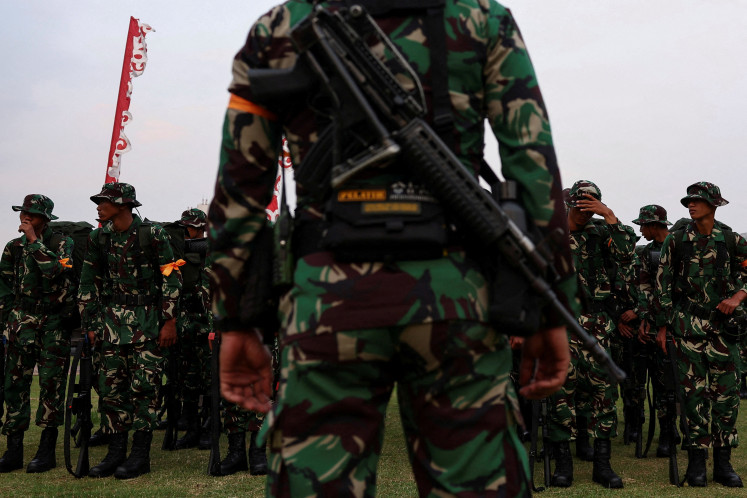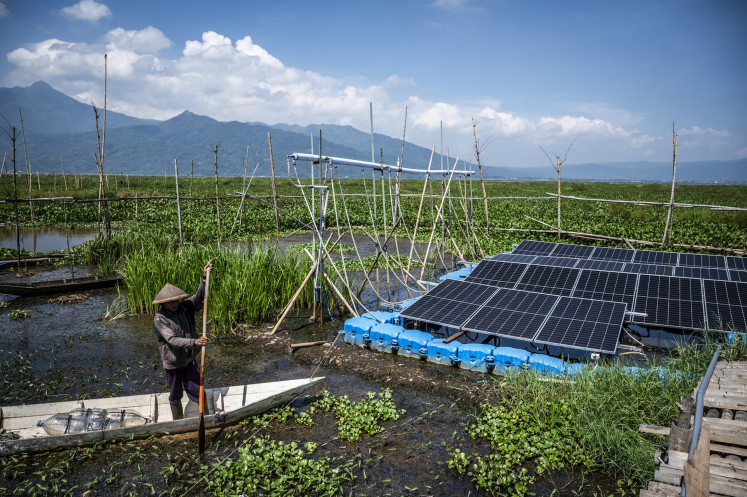Popular Reads
Top Results
Can't find what you're looking for?
View all search resultsPopular Reads
Top Results
Can't find what you're looking for?
View all search resultsClean air for Jakarta: From a local crisis to a G20 global priority
The G20's decision to include air quality on its agenda presents an opportunity for Jakarta to ramp up evidence-based efforts to take a lead in ensuring clean air for its residents as part of its aim to become a global city by 2045.
Change text size
Gift Premium Articles
to Anyone
 A Jakarta Environmental Agency mist cannon truck passes along Jl. TB Simatupang in South Jakarta on Sept. 19, releasing 4,000 liters of water as mist in a bid to reduce air pollution ahead of Jakarta Eco Future Fest 2025, a two-day environmental festival that opened on Sept. 25. (Antara/Asprilla Dwi Adha)
A Jakarta Environmental Agency mist cannon truck passes along Jl. TB Simatupang in South Jakarta on Sept. 19, releasing 4,000 liters of water as mist in a bid to reduce air pollution ahead of Jakarta Eco Future Fest 2025, a two-day environmental festival that opened on Sept. 25. (Antara/Asprilla Dwi Adha)
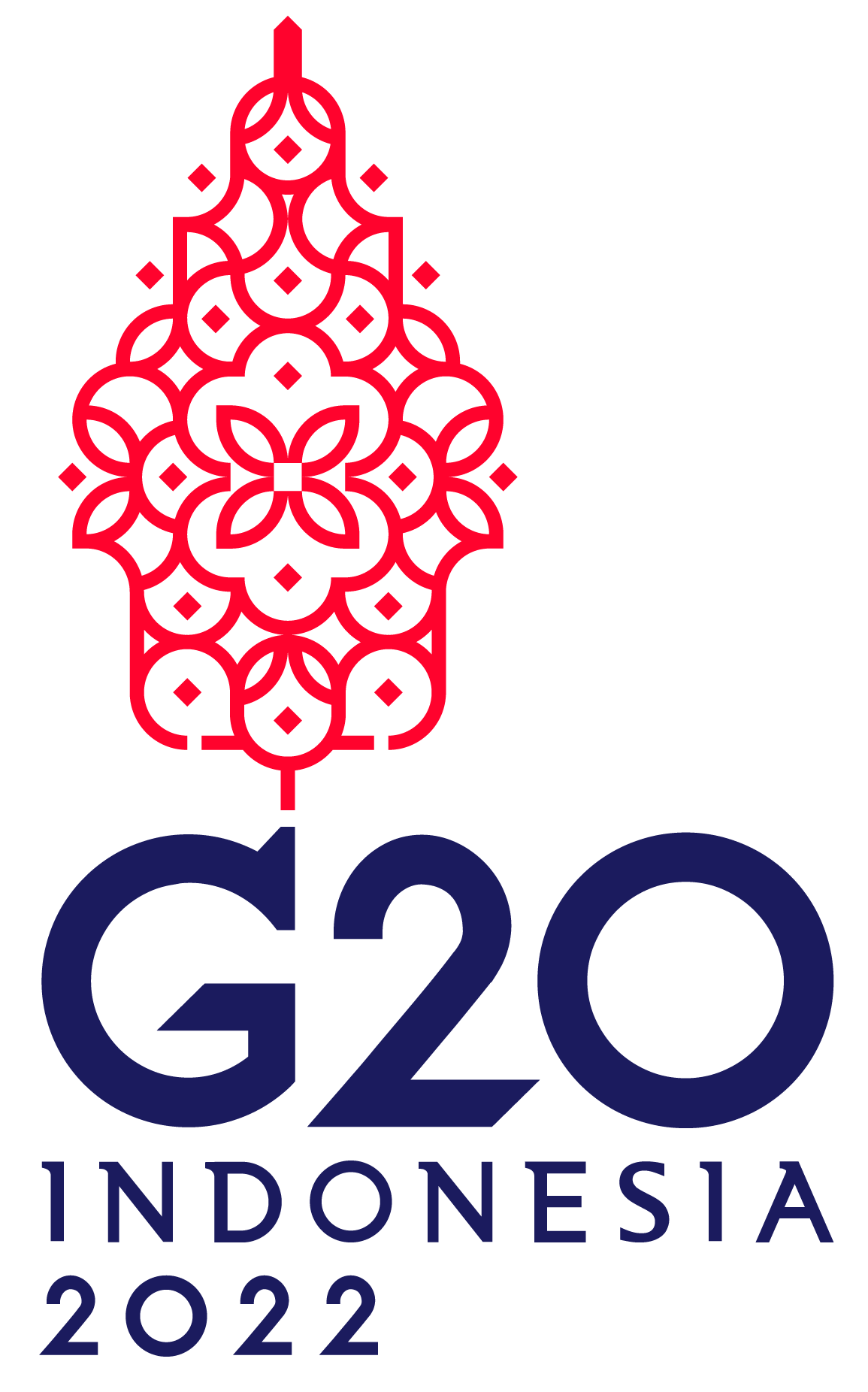
For the first time in history, air quality officially entered the Group of 20 agenda. Under South Africa’s 2025 presidency, the world’s largest economies have placed air pollution control among their core priorities, marking a fundamental global shift.
This momentum also resonates strongly in Southeast Asia, where countries are increasingly recognizing clean air as a shared regional priority, building on their long-standing transboundary haze agreement.
For the people of Jakarta, this recognition is long overdue. Air pollution is a daily, visible and measurable crisis. Almost every day, popular air quality monitoring apps like IQAir rank Jakarta among the most polluted cities in the world.
Its ranking reflects an urgent health and economic emergency. A 2023 study by Syuhada et al. estimated that Jakarta’s air pollution contributed to more than 5,000 hospitalizations annually. The economic toll is similarly staggering at an estimated US$2.9 billion per year, or 2.2 percent of the city’s gross regional domestic product (GRDP).
Yet solutions require more than acknowledging the scale of the problem. They depend on accurate, timely data and a clear understanding of where pollution comes from.
In recent years, the Clean Air Catalyst (CAC), a partnership led by the World Resources Institute (WRI) that involves both international and local collaborators, has helped strengthen Jakarta’s scientific foundation for air quality management. By expanding monitoring for fine particulate matter (PM2.5) and black carbon, CAC’s 2024-2025 findings confirm what Jakartans experience every dry season: average PM2.5 levels can reach 53 micrograms per cubic meter, more than three times the national standard and 10 times the World Health Organization guideline.
Understanding the sources of those pollutants is crucial. Previous studies, including work by Lestari et al. in 2022, have long pointed to transportation as a major contributor. With some 11 million registered vehicles, the majority comprising 8.6 million motorcycles, Jakarta’s roads form a crowded and diverse emissions landscape.


